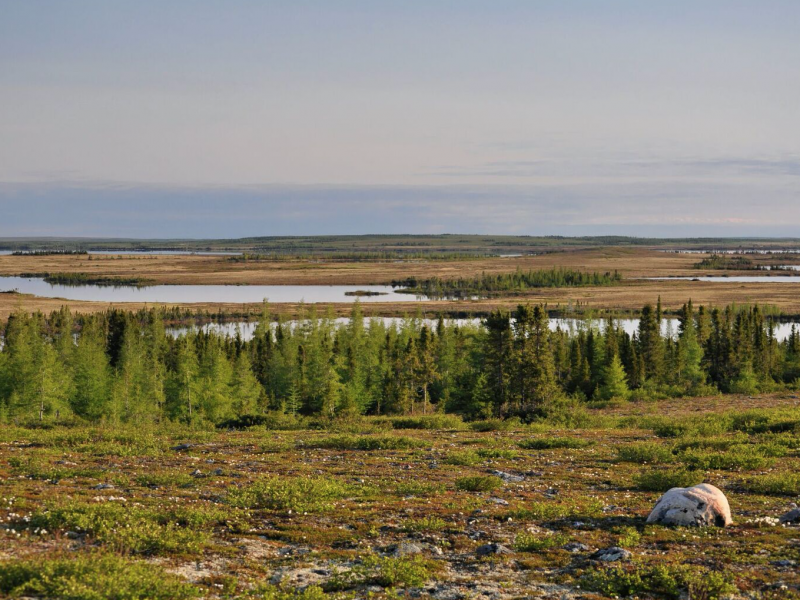New Attention to Old Frost: A Spotlight on Phil Camill's Recent Research
By Rebecca Goldfine
The Eos Research Spotlight features "exciting new research from AGU journals." It recently signaled out a research project led by Claire Treat that was originally published in the Journal of Geophysical Research: Biosciences in April.
The study, which Camill contributed to, finds that over the next century, the amount of carbon that tundra, fens, bogs, and other peat wetlands will lose or gain as the climate warms will vary based on location and site history. Some areas will release carbon, while others will accumulate and store carbon at greater rates.
This new finding sheds more insight into how permafrost peatlands will respond to a changing climate. As the climate heats up, the frozen organic material contained in permafrost will thaw and decay, releasing carbon into the atmosphere. Because peatlands are so vast, especially in the north, their melting could potentially hasten or worsen climate change.
But this scenario could be offset by the "greening effect," which anticipates that vegetation growth in peatlands will expand under the warmer and longer growing seasons of the new climate.
To gather their data, Camill and his colleagues simulated more than 8,000 years of peatland history and examined six peatland sites in western Canada, from sporadic southern permafrost zones to more continuously frozen permafrost sites in the high Arctic.
They predict that by 2100, less than five percent of carbon will have escaped the permafrost peatlands they looked at. "Across the sites, new peat accumulation offset a relatively large fraction of carbon losses," the researchers write.
The greatest driver of carbon loss in peatlands in the coming decades will be the "active layer" of peatland that melts and freezes seasonally, between 0.2 and 1.0 meters in depth, rather than deeper peat or newly thawed permafrost. Unfrozen peat continues to decompose during the warmer months, so by the time it becomes permanently frozen deeper in the earth, the amount of carbon it contains is reduced.
"When such frozen peat ultimately thaws, limited further decomposition is possible, so the carbon loss is much slower than might be expected," Eos Science writer Elizabeth Thompson explains. "Therefore, most of the carbon that peat will release escapes before it ever enters the permafrost. Accordingly, in simulations of future years, the upper active layer, not deeper or newly thawed peat, continued to release the most carbon."



